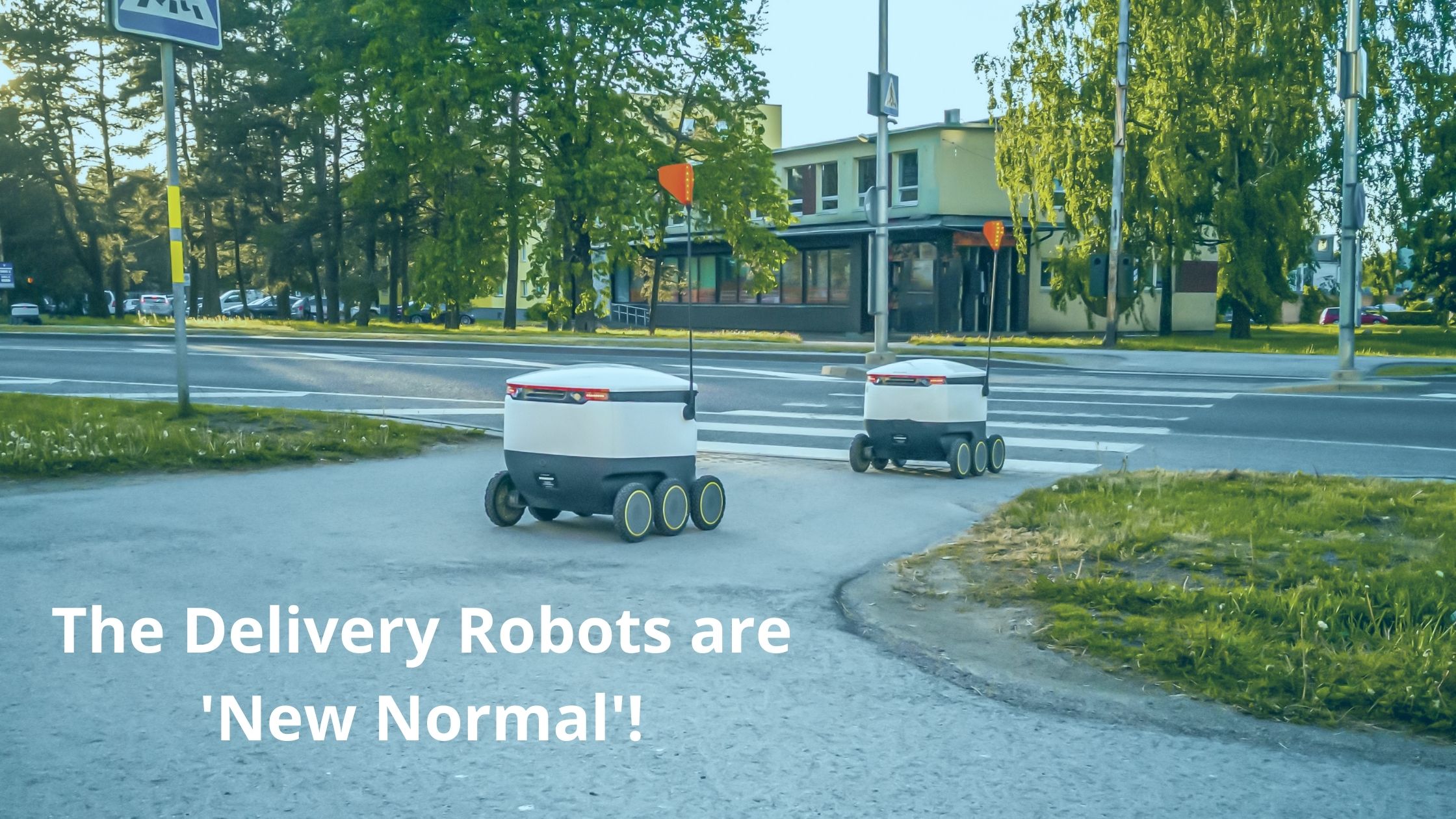The Delivery Robots are ‘New Normal’!

A delivery robot is an automated guided vehicle (AGV) or an autonomous mobile robot (AMR) that transports food, groceries, or any package from a retail warehouse to the customer’s door. Also called last-mile delivery robots, their purpose is to deliver packages to the customer. Using collaborative strategies to grow market share and profits is a common practice among companies. Furthermore, some market players are acquiring start-ups developing autonomous delivery robots to enhance their product capabilities further. Using a delivery robot, Nuro and Walmart tested delivering groceries from Walmart outlets to their customers’ homes in December 2019. Nuro’s vehicles deliver groceries ordered online from Walmart to individuals who live in Houston. The Nuro driverless vehicle service will begin in May 2020 when CVS Pharmacy partners with Nuro to deliver prescriptions. In addition, many legislations aim to control global warming and promote the protection of the environment.
In addition to setting a decarbonization goal for 2050, the European Commission (E.C.) has identified some short-term objectives for 2020 and 2030. Several companies, including Google, have partnered with Uber to deliver their products the following day. As Internet penetration has increased, more and more people are shopping online. In the next few years, the growing trend of online shopping will escalate the demand for delivery robots in the retail industry for e-commerce applications.
Companies dominating the market
As of 2020, delivery robots were dominated by:
Starship Technologies (U.S.), JD.com (China), Panasonic System Solutions Asia Pacific (Singapore), Savioke (U.S.), Nuro (U.S.), Amazon Robotics (U.S.), Robby Technologies (U.S.), Boston Dynamics (U.S.), Robomart (U.S.), and Eliport (Spain).
To continue to grow in the delivery robot market, players have used several growth strategies, such as expansion, partnerships, agreements, and collaborations, which have strengthened their product portfolios and expanded their customer bases.
Impact assessment of COVID-19
COVID-19 is a hazardous respiratory disease that has become a global problem and affects the market for delivery robots. As a result of COVID-19, the shipping industry has suffered. The growth of delivery robots in recent years has resulted from government-imposed social distancing norms in various countries. They do not require human interaction. Globally, delivery robot sales in critical sectors including retail, food, drink, and healthcare will continue to rise. The robots helped customers receive packages during a lockdown during the pandemic delivery to help customers receive packages during a lockdown.
Factors that influence the market
- Reduction in the cost of last-mile deliveries: The final delivery phase of a supply chain, from the warehouse or distribution center to the end-user, accounts for almost 28% of transportation costs. In addition to congestion, remote locations, errors in address details, hard-to-find destinations, and a severe labor shortage affect the delivery of last-mile packages. We cannot optimize this phase due to all these reasons. When it comes to e-commerce, customers are not only expecting top-quality products at lower prices, but they are also inclined to demand them. Customers will benefit from autonomous delivery robots in e-commerce as they will be more convenient at a reduced cost, which will result in a significant change in competitive dynamics.
- Robotic delivery is subject to stringent regulations: As delivery robots operate in public areas designated as pedestrian zones, they must abide by the law. If a delivery robot injures a user or a human nearby, the manufacturer is most likely responsible for the tort of negligence.
- Robotic delivery adoption increases post-COVID-19: COVID-19, which has been spreading worldwide, has spotlighted delivery robots for contactless package delivery, and enormous market interest has spurred several robotic delivery operations in the United States. As a result of the pandemic, delivery robot technology will very likely expand its market. Restaurants are also adopting a delivery robot for the delivery of food. Although delivery robots have been around for many years, they have seen a noticeable increase in popularity among end-users during the pandemic, including restaurants, grocery stores, and other delivery service providers.
- Limitations of ground delivery robots: Despite their advantages over drones, ground robots have many operational and technical shortcomings. There is also a short runtime as a technological disadvantage. Imagine that all companies manufacture robots. In that case, a robot covers an average distance of 10 kilometers in a single charge, and its service is limited to short distances from the hub or warehouse.
Many companies that manufacture delivery robots have developed robotic pilot models. These pilot models would be tested under various conditions and several circumstances before technological advancements and improvements. They would be able to differentiate themselves in a competitive market.
A typical logistics company charges almost 28 percent of the total cost of shipping a product due to the product’s delivery to the end-user from the warehouse or delivery hub. It’s no secret that online consumers are notorious for their high demands, but they also tend to prefer lower-priced, top-quality products. Introducing self-directed delivery robots to the e-commerce industry should lower costs while giving customers a better shopping experience. The last-mile delivery problem is driven by urban congestion, inaccurate address details, remote locations, hard-to-locate destinations, and a severe shortage of workers for providing delivery services. All these factors influence this phase’s optimization. In March 2019, FedEx launched its autonomous delivery robot, known as the FedEx same-day bot, collaborating with DEKA Development & Research Corp.
Athour Bio:
Emma is a freelance writer and content strategist who offers to ghostwrite, blogging, and copywriting services. She has a keen interest in content marketing with a hold on social media management and market research. With more than five years of experience in writing for different domains, currently, she is exploring a new area of interest in “Information Technology”. Pitch her out to discuss interesting and niche IT domains that are blooming in integration with modern technologies.

